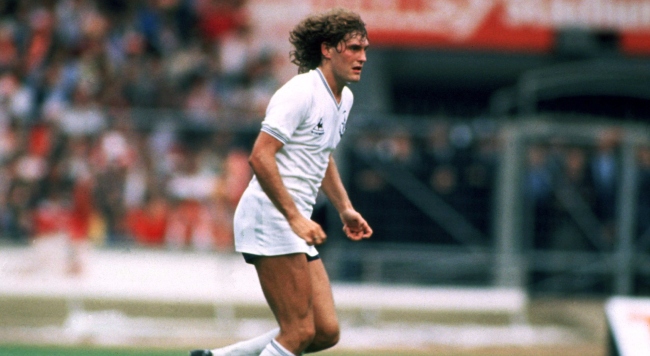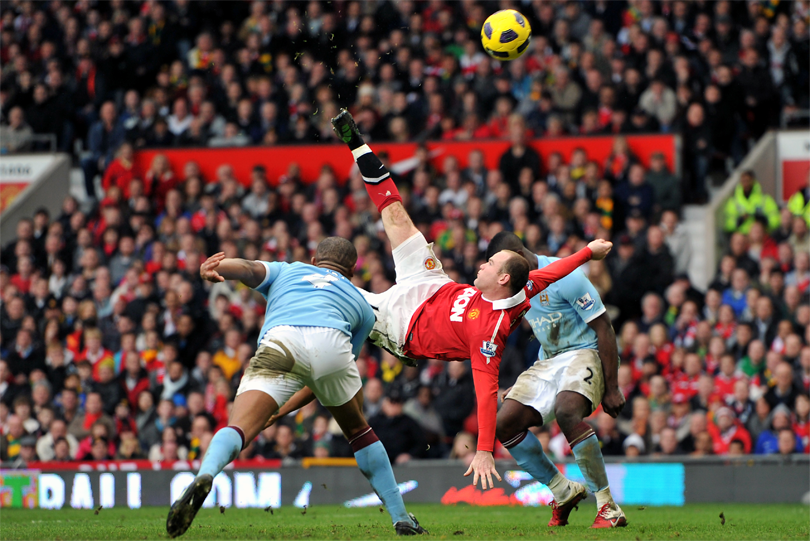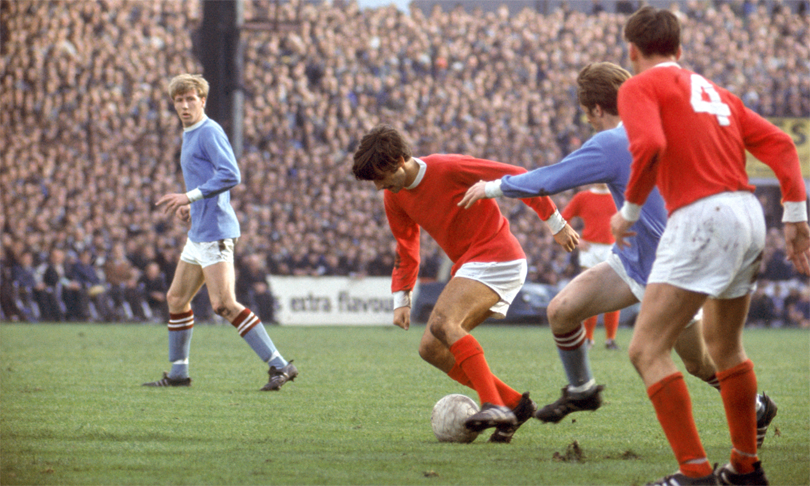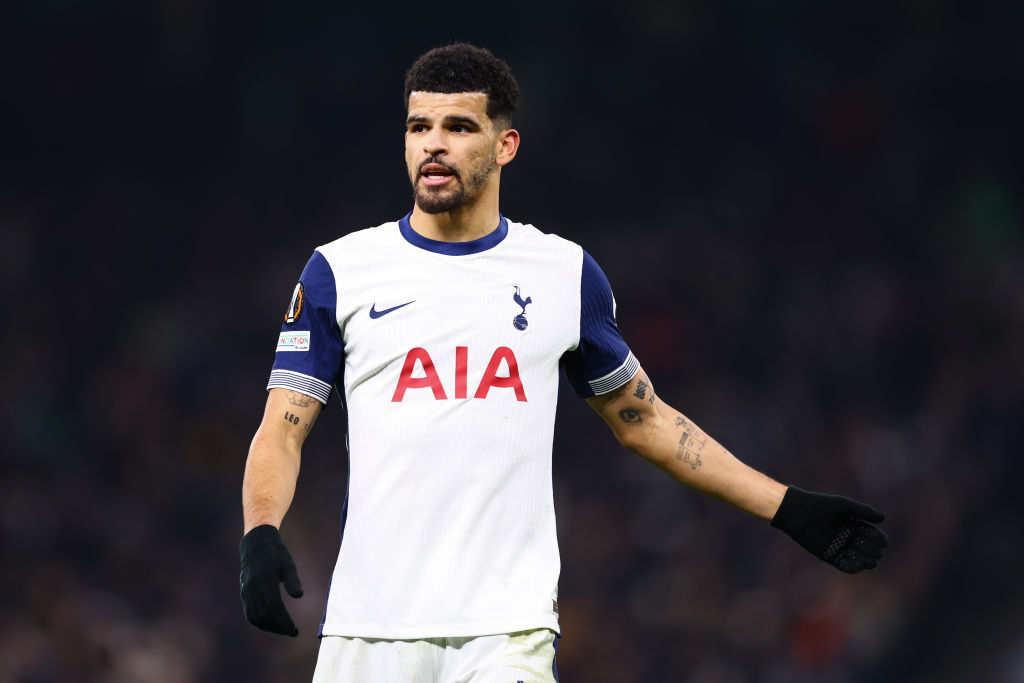Timeless goals: Glenn Hoddle's chip against Watford in 1983
The Tottenham midfielder's turn and chip would drop jaws in any era

Over time, appreciation for most goals falls almost to zero. That’s particularly true in the modern age, when great pieces of skill are not only on permanent and steady rotation, but also live online, permanently available for everyone to watch.
The result is a lost sense of elusiveness; you don’t have be in the right place at the right time to witness those moments. Instead, everything is on demand. That crashing volley from Spain, the swerving free-kick from Italy, or that slaloming run from South America. Any moment from any league in any part of the world is yours to watch right now and then as many times after as you wish.
With different commentary, with different angles, and sometimes even in different languages.
That’s a privilege. It would be churlish to claim otherwise. Nevertheless, the effect has still been to make exceptional moments less precious. Whenever, for instance, Wayne Rooney’s crashing volley against Newcastle appears on television, it provokes familiarity rather than wonder. Or his bicycle kick against Manchester City, which lost its gleam many, many moons ago.

Now, you think about what you were doing when you first saw those goals, rather than the goals themselves. Or your notice the details on the periphery – the goalkeeper’s starting position, the cut of the grass, or how overweight the referee was.
Lionel Messi isn’t immune from this either, ridiculous as that sounds. Even the boutique part of his collection – Gold Label Messi if you will – has been dulled by repetition. His back catalogue is deep and glorious, but – today – you can find yourself watching that rich seam without experiencing so much as a change in pulse.
In effect, in a football sense, we’ve all been allowed to become that teenager who hears a song for the first time, but who then plays it on repeat and eventually to the point of meaninglessness.
Get FourFourTwo Newsletter
The best features, fun and footballing quizzes, straight to your inbox every week.
Glenn Hoddle didn’t play in this era. When he scored goals, those who weren’t in the stadium to bear witness couldn’t run to YouTube. Nor could they depend on half-a-dozen re-runs throughout the week. Even those who had packed in the ground, but who were maybe at the wrong end and watching from the wrong angle, couldn’t just find the highlights on their phone during the tube ride home.
During Hoddle’s era, Match of the Day had evolved to become a more circumspect affair, but even then the viewer had to be in position on the sofa, at the right time and on the right night. If not, it was gone – or, at best, consigned to a shuddering VHS tape, which would have to be dug out from the bottom of a Woolworths bin.
Hoddle is an interesting player to consider in that context. While it’s hardly revelatory to claim him as one of the most gifted players English football ever produced or to believe that 53 caps was a meagre return for someone who should have been the creative heart of every England side for a decade, his highlights have not been dulled and his finest moments aren’t subject to the same ennui.
Quite the opposite; they’re remarkably fresh – none more so than the goal against Watford, scored at Vicarage Road in September 1983.
Listen carefully and you can hear the home fans applauding.
The goal’s class is self-evident, but its most magnetic quality is its craft – not the skill of its execution, but the imagination at its heart. The game has produced many players blessed with an exemplary first-touch, many who could sense and feel the game around them, and plenty who possessed such command of a football that they could more or less do what they wanted with it.
Rarely, however, have all of those attributes been blended to produce something so smooth and elegant.
It’s hard to know for sure, but this is the kind of goal which – irrespective of when it was scored – would have remained immune to becoming mundane. Even if it were part of the opening credits to Super Sunday or Monday Night Football, it would still be a riveting sequence; watch Hoddle, watch the defender being sent into psychosis, watch the goalkeeper being tempted from his line and then being rocked back on his heels and left helpless. It’s less a piece of skill, more a flourish of artistry. Like a great painting, it shares something different about itself on every viewing.
The game’s evolution can be unkind. What was great in decades past can sometimes look ordinary now. Too often, the boggy pitches and the heavy balls aren’t factored in and, as a result, the peak of evolution can be allowed to seem mundane.
Place footage of Cristiano Ronaldo and George Best dribbling side-by-side, for instance, and the latter’s legend can seem impenetrable. We know he was an immortal, but we’re not allowed the perspective to know why. Look at Ronaldo’s feet, look at Best’s. In terms of literal command and effect – or the grade of spectacle - there’s really no comparison.

In that situation, appreciation comes with weights and re-balances, asterisks and caveats.
But Hoddle’s goal isn’t subject to that problem. It’s immune. In fact, the most flattering compliment it can be paid is that it would enrapture any football watcher of any time or era. Whether a fan was born in the 1930s, 1950s or 1990s, their reaction to it would still be the same. It could be Goal of the Season this year, last year, next year or even in thirty years’ time.
It’s actually a shame it wasn’t scored during a time before television. It deserves that kind of treatment – a life deep in the media archive, where the arcane and floral language resides. In those accounts, players are less sportsmen and more biblical characters – they’re described with all the flowing hyperbole found in the Iliad, or the romantic heroism from a graphic novel. They don’t play a sport, they perform feats within a war. And this is like a goal from a Tacitus history. The sort which the reader suspects has been embellished over time and has been garnished by hundreds of tall tales.
“Hoddle shimmied into the wind and dummied the Gods, before whipping his scythe under the ball…”
Whatever else it may be, though, Hoddle’s chip at Watford was staggeringly beautiful and a gift from the kind of mind which very few players possess. That’s where its incorruptible originality comes from.
While you're here, why not take advantage of our brilliant new subscribers' offer? Get 5 copies of the world's greatest football magazine for just £5 – the game's greatest stories and finest journalism direct to your door for less than the cost of a London pint. Cheers!
NOW READ...
INTERVIEW How do you deal with being the most sought-after teenager in the world? Erling Haaland scores goals
LIVERPOOL The best right-back in the world? How Trent Alexander-Arnold is reinventing the full-back
QUIZ Can you name the top 50 clubs according to UEFA coefficient?
Seb Stafford-Bloor is a football writer at Tifo Football and member of the Football Writers' Association. He was formerly a regularly columnist for the FourFourTwo website, covering all aspects of the game, including tactical analysis, reaction pieces, longer-term trends and critiquing the increasingly shady business of football's financial side and authorities' decision-making.
